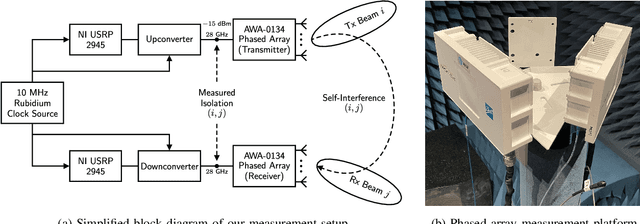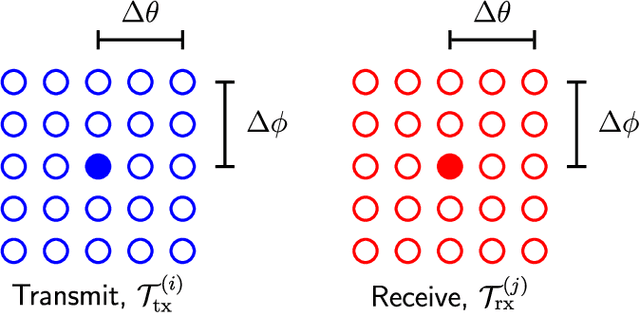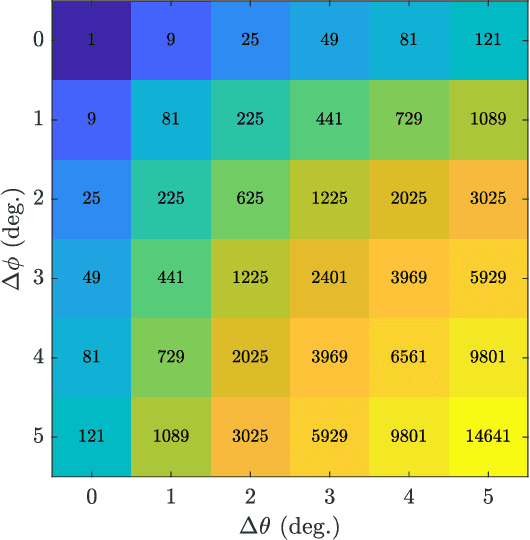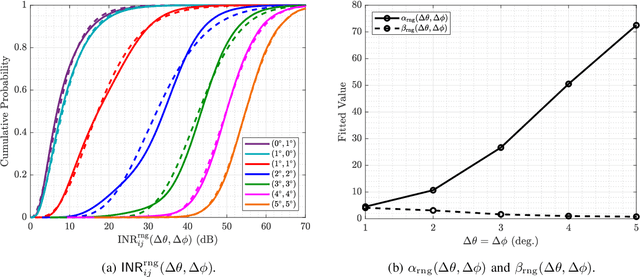Beamformed Self-Interference Measurements at 28 GHz: Spatial Insights and Angular Spread
Paper and Code
Jun 15, 2022



We present measurements and analysis of self-interference in multi-panel millimeter wave (mmWave) full-duplex communication systems at 28 GHz. In an anechoic chamber, we measure the self-interference power between the input of a transmitting phased array and the output of a colocated receiving phased array, each of which is electronically steered across a number of directions in azimuth and elevation. These self-interference power measurements shed light on the potential for a full-duplex communication system to successfully receive a desired signal while transmitting in-band. Our nearly 6.5 million measurements illustrate that more self-interference tends to be coupled when the transmitting and receiving phased arrays steer their beams toward one another but that slight shifts in steering direction (on the order of one degree) can lead to significant fluctuations in self-interference power. We analyze these measurements to characterize the spatial variability of self-interference to better quantify and statistically model this sensitivity. Our analyses and statistical results can be useful references when developing and evaluating mmWave full-duplex systems and motivate a variety of future topics including beam selection, beamforming codebook design, and self-interference channel modeling.
 Add to Chrome
Add to Chrome Add to Firefox
Add to Firefox Add to Edge
Add to Edge